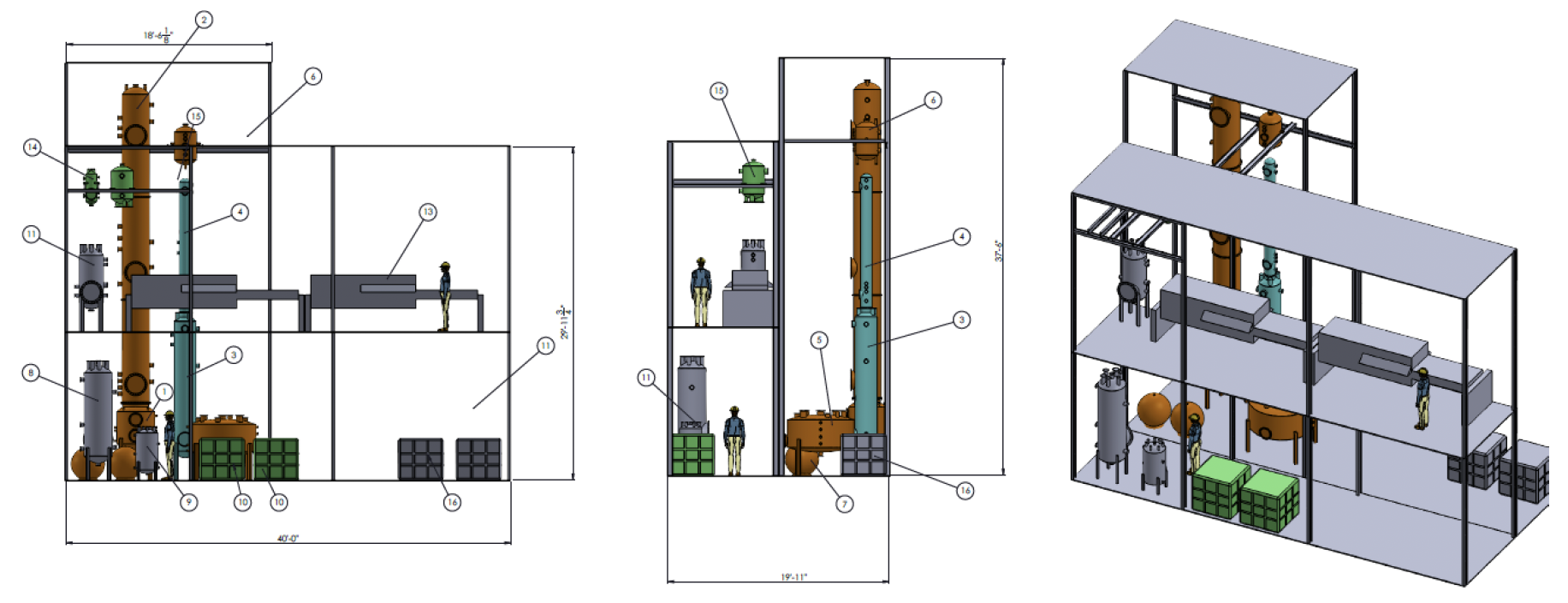SLRP by Liquid Lignin Company
Summary
Using vessel sizes determined by Liquid Lignin Company, EnviroSep generated a 3D diagram of the demonstration SLRP capable of making ten (10) metric ton per day (Te/d).
Figure 1. 3D Diagram of Demo-SLRP
The skid size is 20-feet wide, 40-feet deep and 40-feet high.
Discussion
Vessels: All of the vessels are included:
Black Liquor Sand Filters (2)
Carbonation Column
Carbonation Column Knock-Out
Carbonation Settler
Vent-Gas Absorber
Vent-Gas Stripper
Carbonated (lignin-depleted) Black Liquor Neutralization
Acidification Reactor
Acidification Knock-Out
Lignin Slurry
Lignin Filter (2)
Acid Brine Recycle
Acid Brine Neutralization
Concentrated Sulfuric Acid Totes (2)
Concentrated Sodium Hydroxide Totes (2)
Not included in the 3D are:
Pre-Carbonation Column (very small);
Sulfuric Acid Mixing Tee with Recycled Brine (very small);
18 process pumps;
Piping and control valves;
Sensors, including nine (9) pH and three (3) viscosity measurements;
H2S monitor and alarm;
Master control system;
Collection bins under each filter and lignin supersacks;
CO2 dewar or tank- wagon;
Air compressor dedicated to Lignin Filter; and
Forklift for removing lignin supersacks.
Acid Side ↔ Base Side: The skid is in two equal halves separated by a short (≈ one-foot high) dike so that inevitable spills are separated. A sunken sump will be incorporated into each half with the concrete floor graded slightly to direct liquids to their respective sumps.
The base-side vessels are: Carbonation Column/Settler; Carbonation Column Knock-Out; Vent-Gas Absorber/Scrubber; Acid Brine Neutralization, Carbonated Black Liquor Neutralization; Sand Filters; and Concentrated NaOH totes. The acid-side vessels are: Acidification Reactor; Acidification Reactor Knock-Out; Lignin Slurry, Lignin Filters (2); Acid Brine Recycle; and Concentrated H2SO4 totes.
Filters: Two Watermark filter will operate in parallel. One will be accumulating lignin while the other goes through wash cycle which includes:
Wash with pure water at 80 °C;
Squeeze cakes with pressurized bladders within each cell to remove water;
Blow filter with air to remove residual water;
Separate plates to allow lignin cakes to dump; and
Reclosing plates to begin filtering lignin.

